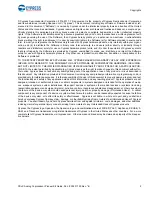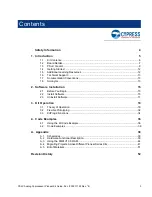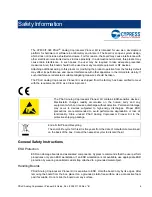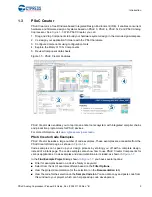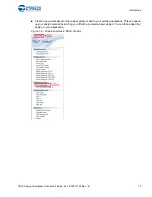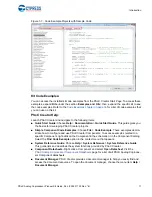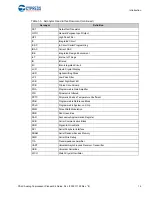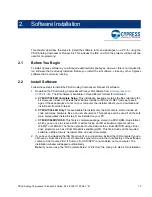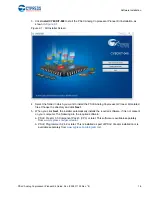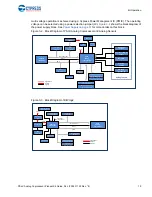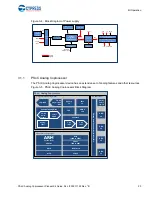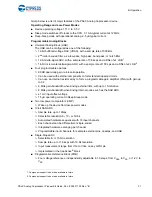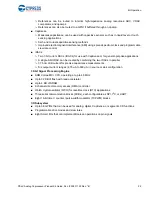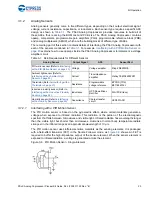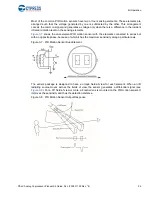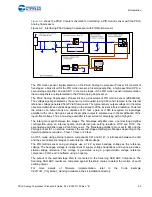
PSoC Analog Coprocessor Pioneer Kit Guide, Doc. # 002-11190 Rev. *B
12
Introduction
1.4
Getting Started
This guide will help you get acquainted with the PSoC Analog Coprocessor Pioneer Kit:
■
The
Software Installation chapter on page 15
describes the installation of the kit software. This
includes the PSoC Creator IDE to develop and debug the applications, and PSoC Programmer to
program the .
hex
files on to the device.
■
The
Kit Operation chapter on page 18
describes the major features of the PSoC Analog Copro-
cessor Pioneer Kit and functionalities such as programming, debugging, and the USB-UART and
USB-I2C bridges.
■
The
Code Examples chapter on page 36
describes multiple PSoC Analog Coprocessor code
examples that will help you understand how to create your own PSoC projects.
■
The
provides the detailed hardware description, method to use the onboard
F-RAM, kit schematics, and the bill of materials (BOM).
1.5
Additional Learning Resources
Cypress provides a wealth of data at
to help you to select the right PSoC device
for your design, and to help you to quickly and effectively integrate the device into your design. For a
comprehensive list of resources, see
KBA86521 - How to Design with PSoC 3, PSoC 4, and
. The following is an abbreviated list for PSoC Analog Coprocessor:
■
Overview:
.
■
Product Selectors:
PSoC Analog Coprocessor Product Selector
. In addition,
includes a device selection tool.
■
Datasheets describe and provide electrical specifications for the
,
■
Getting Started with PSoC Analog Coprocessor
provides information on how to get started with
PSoC Analog Coprocessor.
■
: Learn how to design capacitive touch-sensing applications with the
PSoC 4 and PSoC Analog Coprocessor family of devices.
■
Application Notes and Code Examples
cover a broad range of topics, from basic to advanced.
Many of the application notes include code examples. Visit the
web page for a list of all available PSoC Creator code examples. To access code
examples from within PSoC Creator – see
PSoC Creator Code Examples on page 9
.
■
Technical Reference Manuals (TRM)
provide detailed descriptions of the architecture and regis-
ters for each of the PSoC 4 and PSoC Analog Coprocessor family of devices.
■
:
❐
and
are easy-to-use and inexpensive development platforms. These kits include connectors
for Arduino-compatible Shields and Digilent Pmod Peripheral Modules.
❐
and
are very low-cost prototyping platforms for sampling PSoC 4
devices.
❐
is a common development platform for all PSoC family devices.
❐
The
device provides an interface for flash programming and debug.
■
provide design and application tips from experts on using the
device.
■
PSoC Creator Training: Visit
www.cypress.com/go/creatorstart/creatortraining
for a comprehen-
sive list of video trainings on PSoC Creator.


